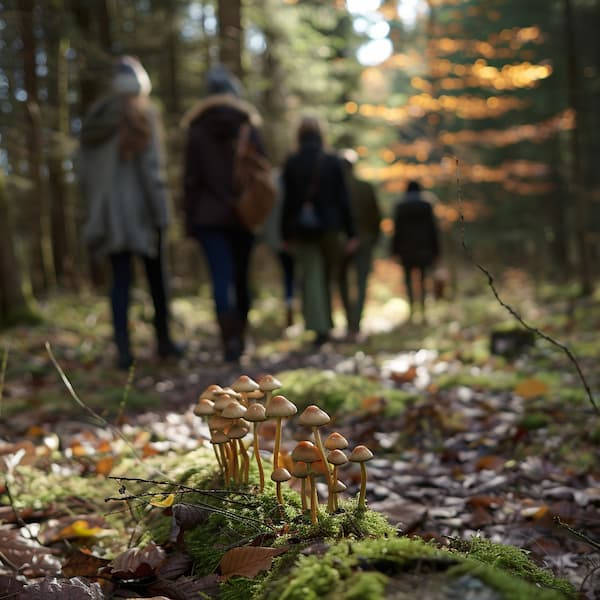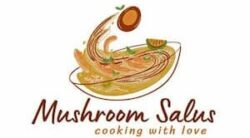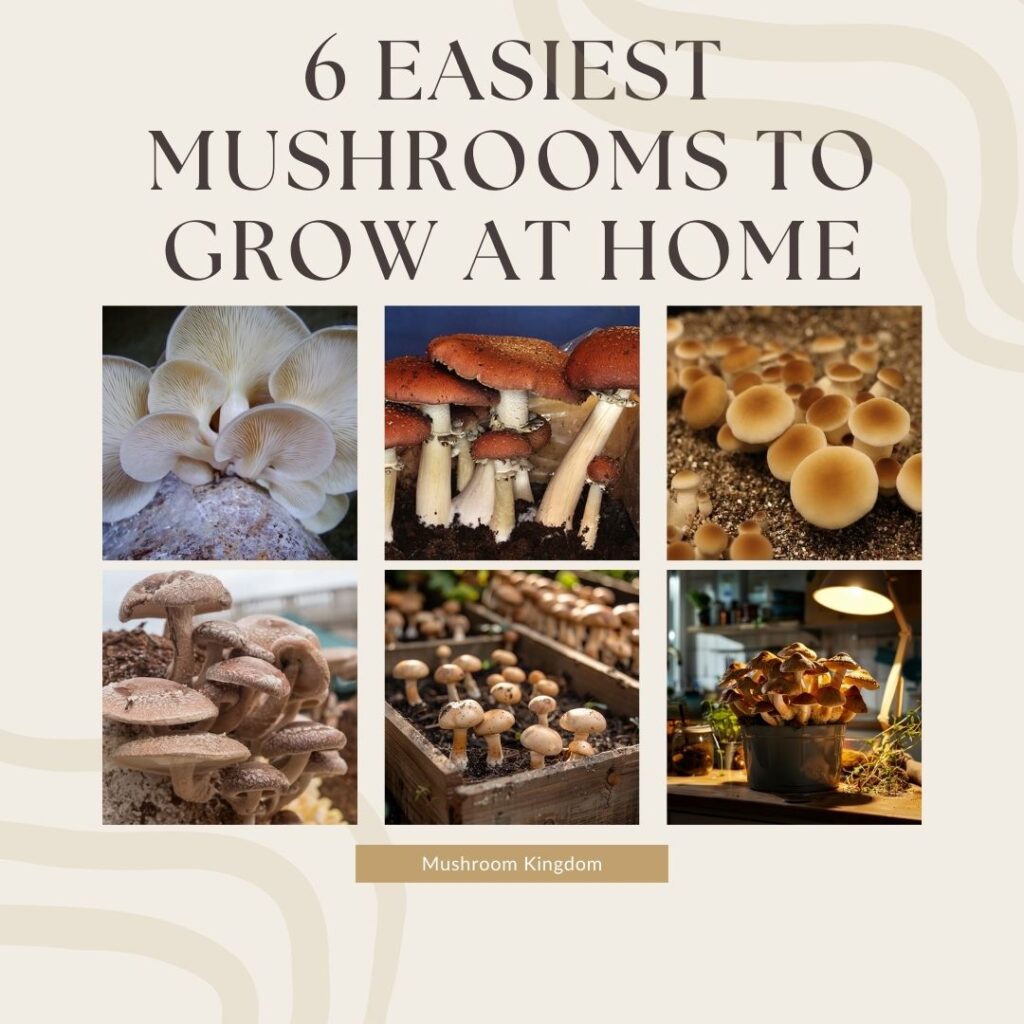Foraging for mushrooms can be an exciting and rewarding hobby. With the right knowledge and preparation, you can enjoy the thrill of discovering edible mushrooms in the wild. This beginner’s guide will walk you through the basics of mushroom foraging.
How to Forage for Mushrooms
To start, you need to familiarize yourself with the types of mushrooms that grow in your area. Purchase a good field guide that includes detailed descriptions and photos of local mushrooms.
Online resources and apps can also be helpful, but having a physical guide is invaluable when you’re out in the field.

Begin by learning to identify a few easy-to-recognize edible mushrooms, such as chanterelles or morels.
These mushrooms have distinct features and are less likely to be confused with toxic varieties. Always cross-reference multiple sources to confirm your identifications.
Next, equip yourself with the right tools:
- A basket or mesh bag for collecting mushrooms
- A small knife for cutting mushrooms at the base
- A soft brush for cleaning dirt off mushrooms in the field
Plan your foraging trips during the right season. Mushrooms typically thrive in damp, cool environments. Early morning is the best time to forage because mushrooms are fresher and easier to spot when the ground is moist.
Where to Forage for Mushrooms?
Knowing where to forage is crucial for a successful mushroom hunt. Mushrooms grow in various habitats, including forests, grasslands, and even urban areas.
Forests, especially those with mixed hardwoods, are often the best places to find a variety of mushrooms.
Look for mushrooms around the bases of trees, on decaying logs, and in leaf litter. Some mushrooms form symbiotic relationships with certain trees.
For example, chanterelles often grow near oak and pine trees, while morels are commonly found near ash, elm, and apple trees.
Public lands such as national forests and wildlife management areas are generally open for foraging, but always check local regulations. Private lands require the owner’s permission.
When to Forage for Mushrooms?
Spring and Fall. These are generally the best seasons for mushroom foraging. In the spring, look for morels, which are highly prized and usually emerge between late April and early June.
In the fall, many types of mushrooms, such as chanterelles, boletes, and puffballs, thrive from late September through November.
Some mushrooms, like chanterelles, can also be found in the summer, especially in areas with ample rain and cooler temperatures. However, mushrooms are less abundant during hot and dry periods.
Environmental conditions play a key role too. Mushrooms need moisture to grow, so the best time to forage is a few days after a significant rainfall. Mushrooms can appear quickly after a rain, often within 24 to 48 hours.
Also, mushrooms generally prefer cool, humid conditions. Early morning is an ideal time to forage because the air is typically more humid and the ground retains overnight moisture.
How to Forage Mushrooms Safely?
Safety is paramount when foraging for mushrooms. Some mushrooms are toxic and can cause serious health issues if ingested. Here are some safety tips to follow:
- Never eat a mushroom unless you are 100% certain of its identity. If in doubt, throw it out. Mistakes can be deadly, so it’s better to miss out on a potential meal than to risk your health.
- Learn to identify toxic mushrooms and their look-alikes to avoid dangerous mistakes. Some poisonous mushrooms closely resemble edible varieties, making identification tricky. Pay attention to subtle differences in color, shape, and habitat.
- Use multiple identification sources to confirm your finds. Cross-reference field guides, apps, and online resources. Taking clear photos of your finds and comparing them to reliable sources can help ensure accuracy.
- Join a local mycology club or take a guided foraging tour to learn from experienced foragers. These groups often host events and walks where you can gain hands-on experience and knowledge from experts.
- Additionally, avoid foraging mushrooms from areas that may be contaminated with pollutants, such as roadsides, industrial sites, and areas with heavy pesticide use. Mushrooms can absorb toxins from their environment, making them unsafe to eat even if they are otherwise edible.
- Educate yourself on the symptoms of mushroom poisoning. Knowing the signs of poisoning, such as stomach pain, vomiting, and dizziness, can help you seek prompt medical attention if necessary.
- Inform someone of your foraging plans. Let a friend or family member know where you will be foraging and when you expect to return. This safety measure ensures that someone will look for you if something goes wrong.
Mushroom Foraging Tools and Gear
First, bring a basket or mesh bag to carry your mushrooms. These allow air circulation, keeping your mushrooms fresh and preventing them from getting squished.
Next, carry a small knife to cut mushrooms at the base, ensuring you leave the mycelium intact for future growth. Also, a soft brush or damp cloth is useful for cleaning dirt off mushrooms in the field.
Don’t forget to wear comfortable, sturdy shoes for walking through varied terrain, and bring a hat and sunscreen for protection against the elements. A field guide with pictures is invaluable for identifying different mushrooms accurately.
Moreover, a notebook and pen can help you document your finds and locations. With the right tools and gear, your foraging adventures will be both productive and enjoyable.
How to Clean Foraged Mushrooms?
Once you’ve successfully foraged your mushrooms, it’s important to clean them properly. Here’s how to do it:
- Brush off any dirt or debris using a soft brush or a damp cloth. Avoid washing mushrooms with water as they can absorb moisture and become soggy. This gentle cleaning method preserves the mushroom’s texture and flavor.
- Trim off any tough or dirty stems with a knife. Removing these parts not only improves the mushroom’s taste but also eliminates any lingering dirt or grit.
- Inspect for insects and remove any that you find. Small bugs can sometimes hide in the gills or crevices of mushrooms. Carefully check each mushroom and gently brush away any insects.
- If you must wash your mushrooms, do so quickly and dry them immediately with a clean cloth or paper towel. A quick rinse under cold water can be effective for particularly dirty mushrooms, but ensure you dry them thoroughly to prevent them from becoming waterlogged.
- Clean your mushrooms as soon as possible after foraging. Fresh mushrooms are easier to clean and less likely to harbor dirt or insects. Immediate cleaning also helps preserve their freshness and flavor.
By following these steps, you can ensure that your foraged mushrooms are clean, safe, and ready to enjoy in your favourite recipes.
How to Store Foraged Mushrooms?
Storing your foraged mushrooms correctly will ensure they stay fresh and tasty. Here are some tips:
- Refrigerate fresh mushrooms in a paper bag or a container with ventilation. This helps absorb excess moisture and prevents them from becoming slimy. They should last for up to a week.
- Dry mushrooms if you have a large haul. Slice them thinly and place them on a drying rack or use a food dehydrator. Once dried, store them in an airtight container in a cool, dark place.
- Freeze mushrooms by first sautéing them in a bit of oil or butter, then placing them in an airtight container. This method helps preserve their flavor and texture.
Can You Forage Mushrooms in State Parks?
Foraging regulations vary by state and park. Some state parks allow mushroom foraging, while others have strict prohibitions. Before heading out, check the specific rules for the state park you plan to visit.
If foraging is allowed, follow these guidelines:
- Only take what you need and leave some mushrooms behind to ensure future growth.
- Avoid damaging the surrounding environment.
- Respect other park visitors and follow all park rules.
In conclusion, mushroom foraging is a delightful way to connect with nature and enjoy fresh, wild food. With careful preparation and respect for the environment, you can safely explore the fascinating world of wild mushrooms. Happy foraging!


